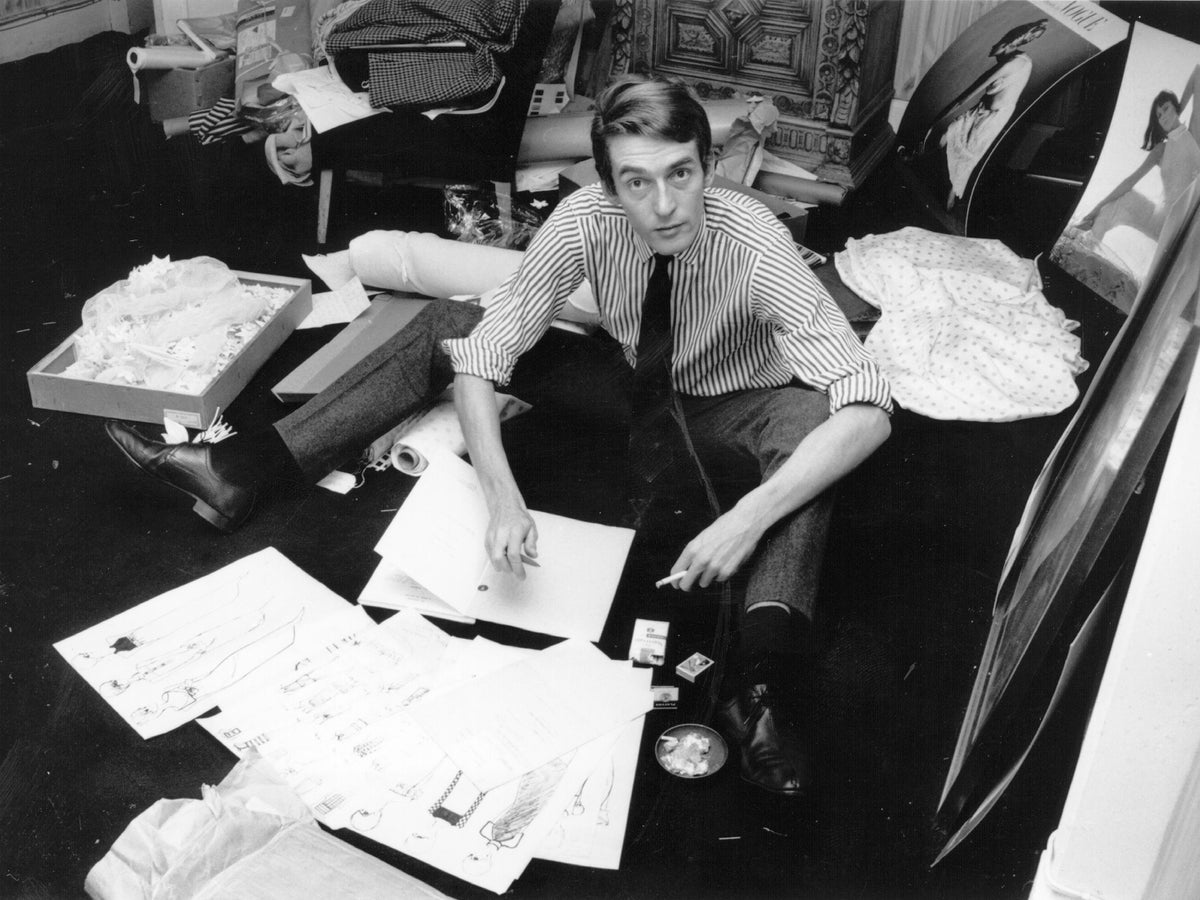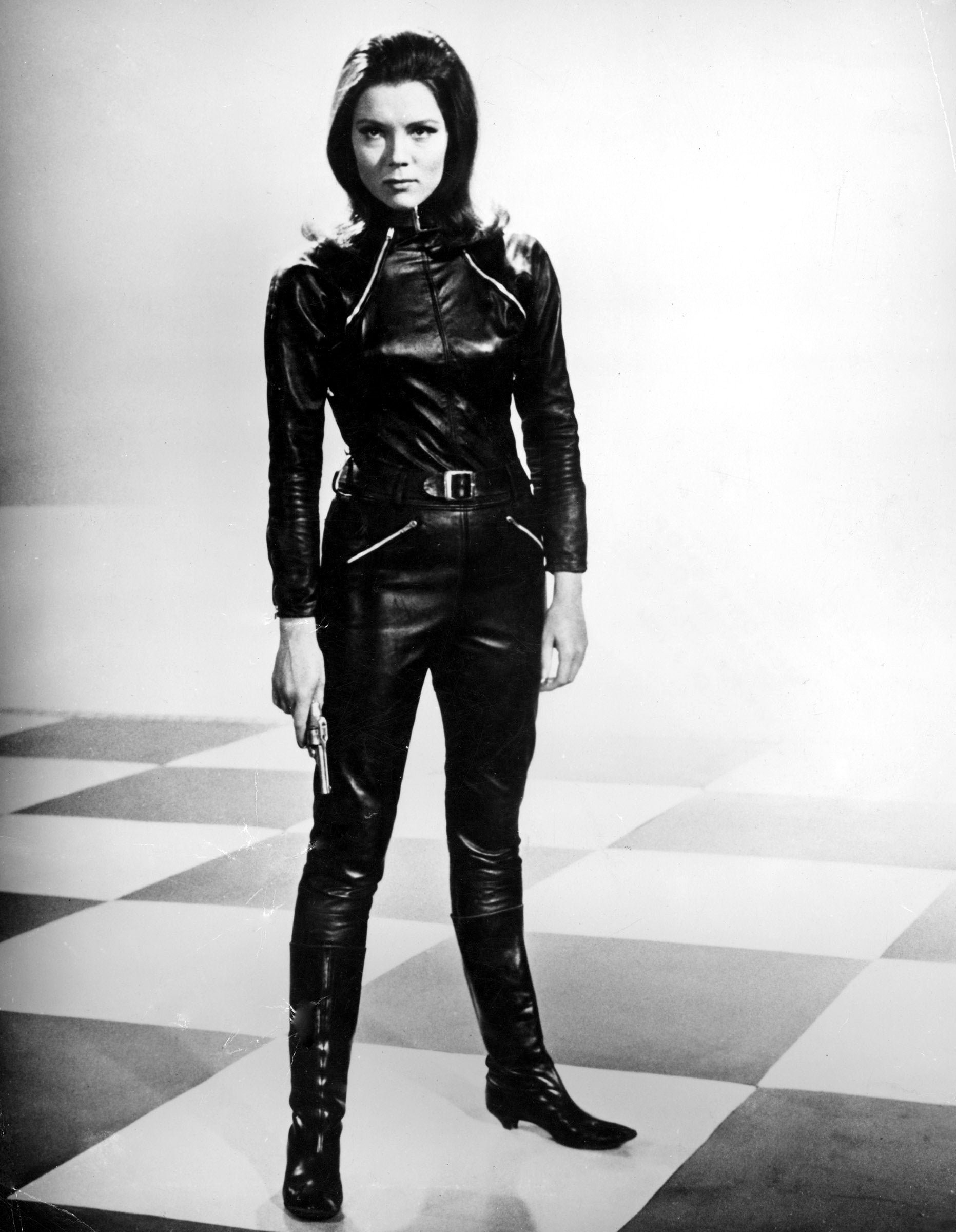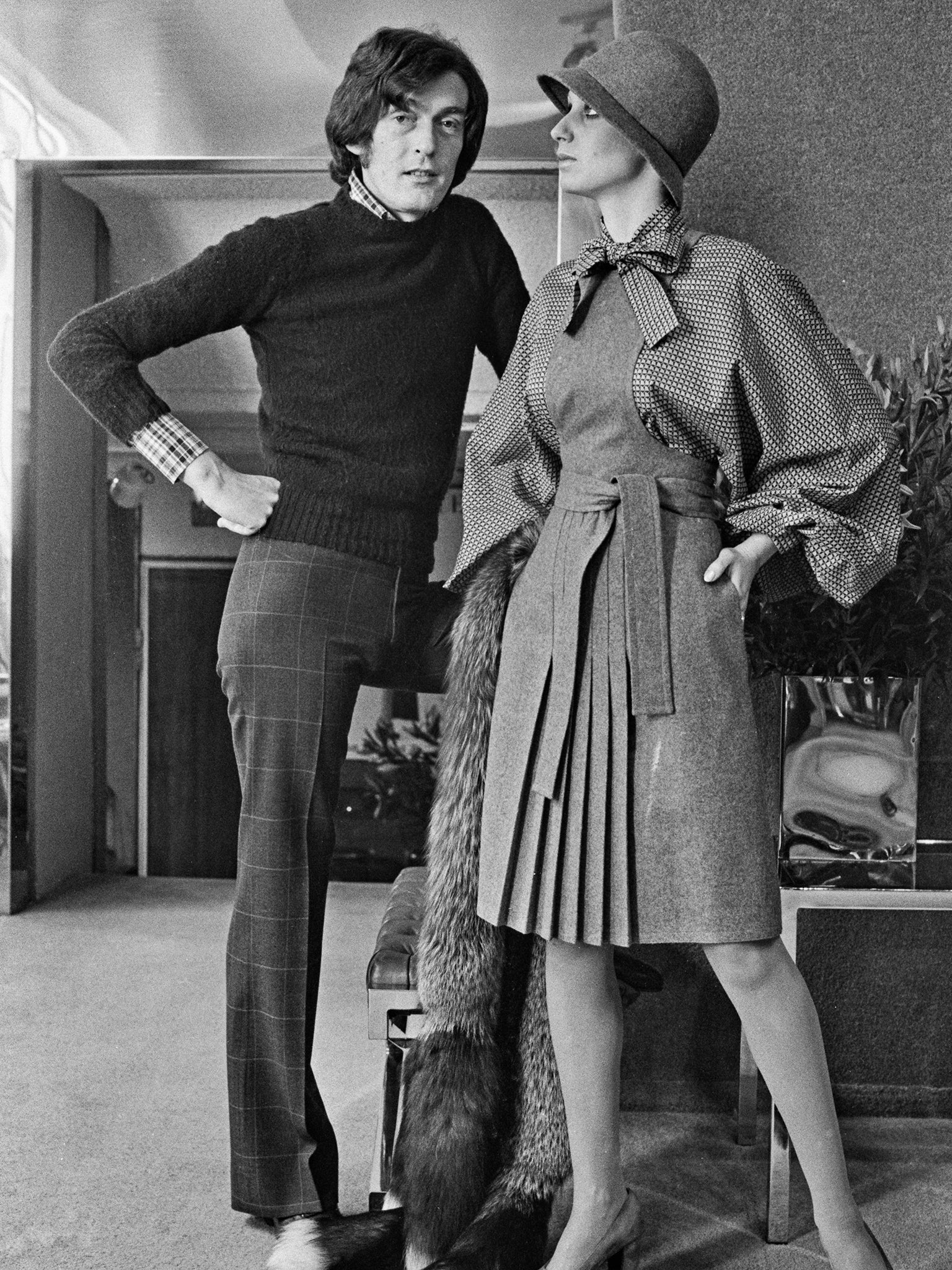
John Bates rose to prominence in the Swinging Sixties fashion scene, but became famous for creating the sartorial onscreen identity of The Avengers TV series’s leading lady, Emma Peel. Using fabrics futuristic for the time – PVC and synthetic stretch jersey – Bates’s designs became synonymous with the newly liberated woman. Peel, played by actress Diana Rigg, was a revolutionary character, independent and athletic, performing moves which originated in martial arts.
Bates was born on 11 January 1935 in Dinnington, Ponteland, then a mining village near Newcastle upon Tyne. Originally intending to be a journalist, Bates learnt shorthand and typewriting before serving in the British army.
In 1956 he decided to become a fashion designer, apprenticed with Gerard Pipart at Herbert Sidon for £4 per week with free accommodation. “I started by taking messages, cleaning, being taught to sketch. If a client came in I would watch how they were dealt with, how they were treated.”
Bates left the rarified atmosphere of Herbert Sidon to work at the opposite end of the market: mass production. He took a job at Diana Dresses, a supplier to C&A situated on the Edgware Road. On leaving, he secured financial backing, in 1959 Bates began designing under the name Jean Varon, chosen for its subliminal French association.
“It seemed to us that we stood a better chance of getting publicity and attracting shop buyers if we at least looked French,” he said.
Initially operating from a first-floor flat in Ladbroke Grove, it quickly became unfeasible and new premises were found near Bond Street at 11 Woodstock Street. Bates designed a capsule collection and wrote several letters per week to editors and clients.

The buyer for the French Room in Fenwicks of Bond Street was the first customer, requesting draped dresses and bridal gowns, securing the first major press mention for Jean Varon, in a review written by Ernestine Carter in The Sunday Times in June 1961. “Trying to get buyers into our showroom was like trying to get royalty to visit,” recalled Bates. “They were formidable in their formality. They’d sweep in like three-masted schooners in full sail, fully made up with hat and gloves, a daunting sight.”
Marit Allen, the editor of the highly influential “Young Ideas” page, also gave Bates his first significant piece of press coverage in British Vogue. “John Bates came onto the London fashion scene like a bolt of blue light trailing sparks of excitement,” wrote Allen in her foreword to John Bates: Fashion Designer, “designing the shortest skirts, the swiftiest shapes, the surest colours.”
Bates was to design Allen’s wedding outfit for her marriage to film producer Sandy Lieberson on 10 June 1966 – a white gabardine and silvered PVC mini dress and coat which is part of the V&A collection and featured in the Museum of Bath in 2006. Featured in British Vogue more than 300 times during his career, clothes designed by Bates under the Jean Varon label were photographed by David Bailey, Helmut Newton and Cecil Beaton on the iconic models of the day Jean Shrimpton, Jill Kennington and Twiggy.

The catalyst for the success of Jean Varon was the announcement, made in 1965, that Bates would be designing the wardrobe for Rigg, who had just replaced Honor Blackman as the leading lady in The Avengers. Blackman’s onscreen costume had been a leather catsuit. Bates was approached by Anne Trehearne, ex-editor of Queen magazine, to design a new look for an actor Bates had never met before. There was a four-day deadline.
Created with black and white television projection in mind, the collection included op-art shift dresses, trouser suits, vinyl double-breasted car coats and the quintessential jumpsuits in Celon stretch which became the signature Avengers look. The press went wild, with coverage of the Avengers collection featuring in every major newspaper and magazine. On 27 September 1965 Felicity Green, writing in The Daily Mirror, said: “The question, the morning after, will be ‘Did you see what Emma wore – and where can I buy it?’”
After the success of The Avengers, Bates’s company grew dramatically, its headquarters relocating to a modern workspace in Noel Street, W1. By 1969 Bates was designing under five different labels, exporting to 44 countries internationally and selling in 28 boutiques across the UK. His success was to continue throughout the Seventies, opening his first European shop within Illum Department Store in Copenhagen. In 1977 brands under both the John Bates and Jean Varon label were crowned with the opening of a showroom on Seventh Avenue in New York. Two years later he produced his first menswear collection.
In 1980, 21 years after showing his first fashion designs in a flat on Ladbroke Grove, Bates made the decision to close the business. Jean Muir said at the time: “I could have wept. It’s such a devastating blow for the industry. What a sombre time. It’s another brick out of our wall.”
Bates moved to Wales, living with his partner John Siggins and focusing on painting rather than creating clothes. “I feel as though I am permanently on holiday,” Bates told Brenda Polan of The Sunday Telegraph as the fascination with his collection for The Avengers remained, culminating in a retrospective exhibition in 2006 at the Fashion Museum in Bath.
John Bates, designer, born 11 January 1935, died 5 June 2022







